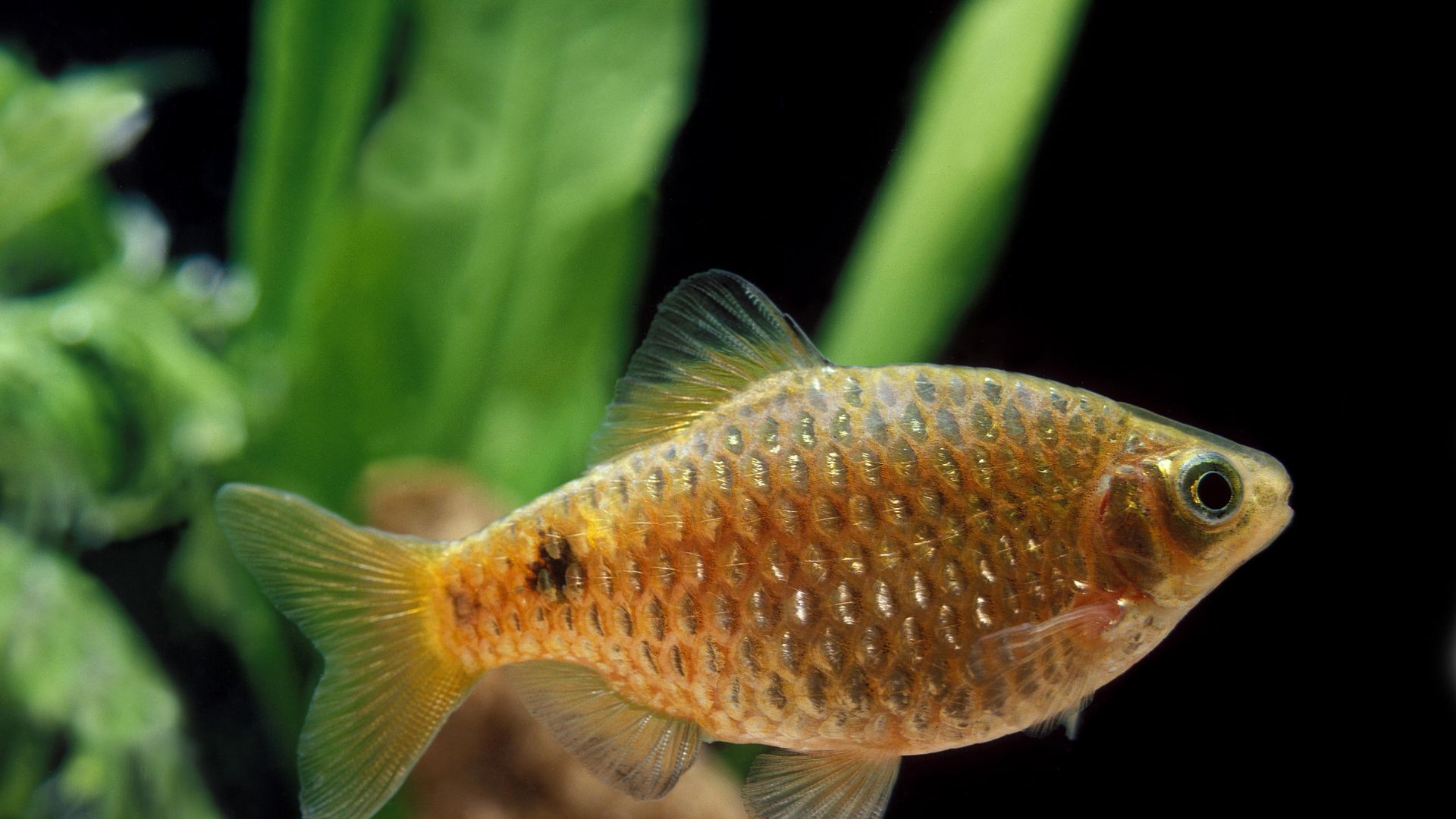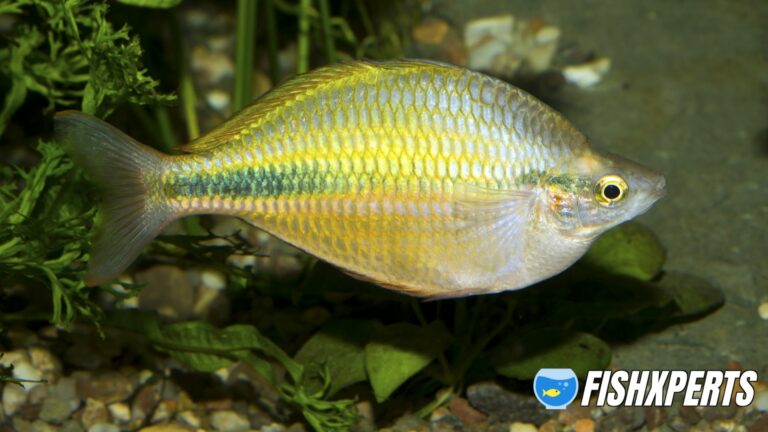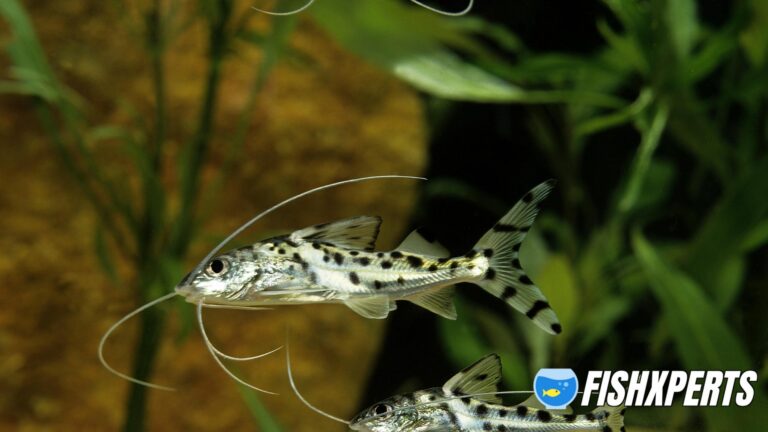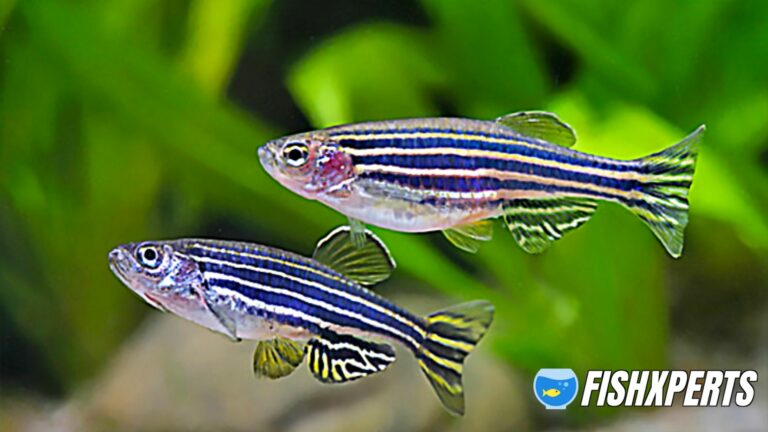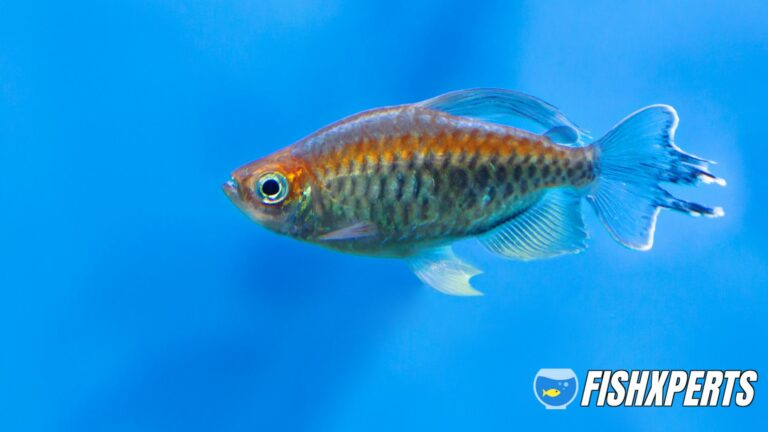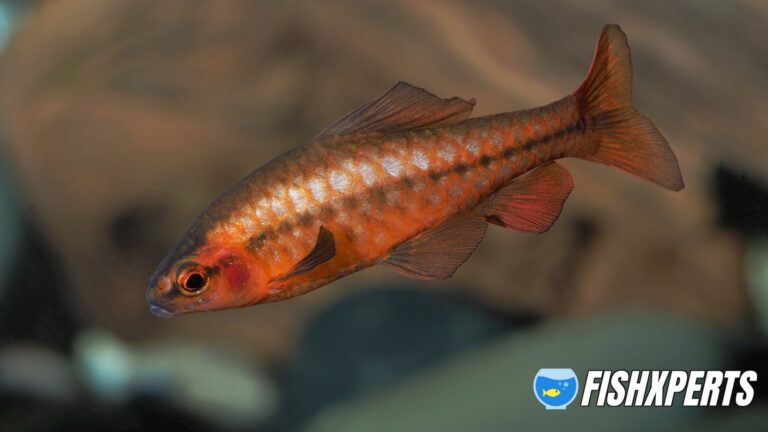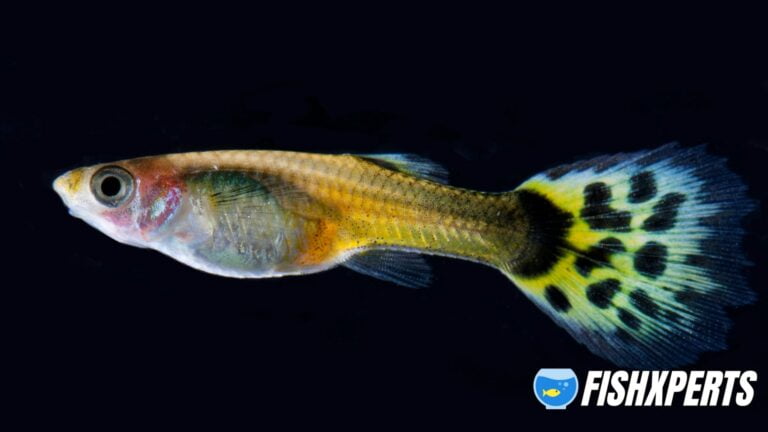Rosy Barb Care
Overview
The Rosy Barb (Barbus conchonius) is a popular freshwater aquarium fish. It is native to South Asia and is found in Pakistan, India, Bangladesh, and Nepal. The fish is a member of the family Cyprinidae and is closely related to the goldfish. It was first described by eighteenth-century German naturalist Peter Simon Pallas.
The Rosy Barb is a hardy fish and is easy to care for. It is a peaceful fish that is well suited for community tanks. The fish is omnivorous and will eat a variety of foods, including pellets, flakes, and live foods.
The Rosy Barb is a popular fish due to its beauty. The fish has a reddish-orange body with black spots. The fins are red and the tail is forked. The fish grows to a length of about 6 inches (15 cm).
The Rosy Barb is a spawning fish and will lay its eggs in a spawning mop or on plant leaves. The fry are easy to care for and will grow quickly.
If you are looking for a beautiful and hardy fish for your aquarium, the Rosy Barb is a great choice.
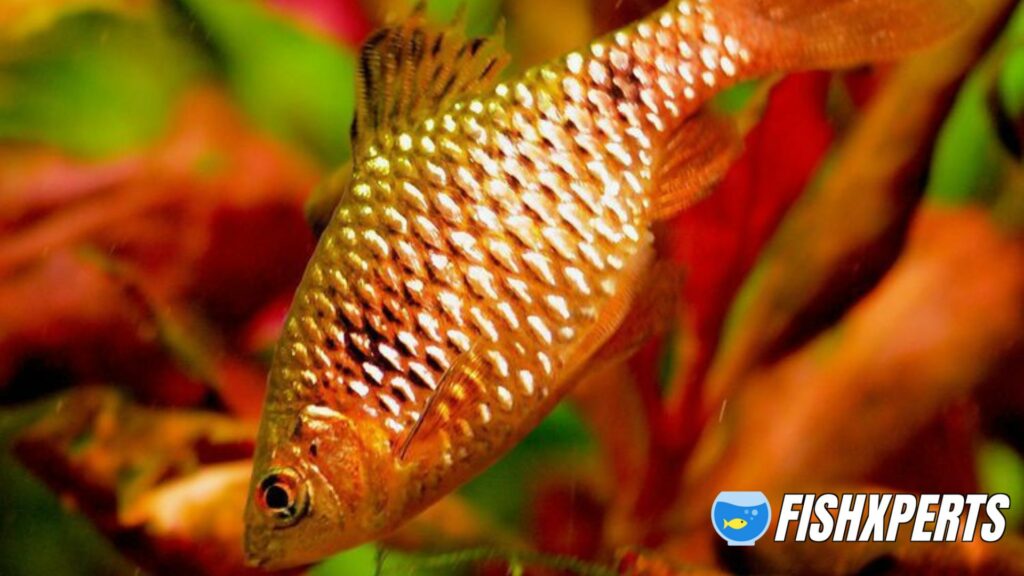
Rosy Barb Care Tips In Brief
The Rosy Barb is a beautiful freshwater fish that is popular among aquarium enthusiasts. Although they are relatively easy to care for, there are a few things to keep in mind to ensure your Rosy Barb stays healthy and happy.
Here are some tips on Rosy Barb care:
- Provide a spacious tank with plenty of hiding places. Rosy Barbs are active fish and need room to swim.
- Keep the water quality high by doing regular water changes and using a good filter.
- Feed a varied diet of quality pellets or flakes, as well as live or frozen foods.
- Keep an eye on your fish for any signs of illness and seek professional help if needed.
By following these simple tips, you can enjoy your Rosy Barb for many years to come!
Lifespan
The lifespan of a Rosy Barb is typically 5-7 years, though some have been known to live up to 10 years with proper care. In the wild, Rosy Barbs typically only live for 2-3 years.
The lifespan of a Rosy Barb can be increased with proper care, which includes regular water changes, a nutritious diet, and plenty of space to swim. Rosy Barbs are also known to be quite hardy, so they can withstand a wide range of water conditions.
Appearance
The Rosy Barb is a freshwater fish that is native to South Asia. It is a member of the Cyprinidae family and is closely related to the goldfish. The Rosy Barb is a popular aquarium fish and is known for its beautiful coloration.
The body of the fish is pink or orange with dark spots on the sides. The fins are red or orange. The Rosy Barb grows to a length of 5-7 inches (12.5-17.5 cm).
The Rosy Barb is a peaceful fish that is compatible with most other aquarium fish. It is an active swimmer and does best in an aquarium with plenty of open space. The Rosy Barb is a hardy fish that is easy to care for. It is a good choice for beginners.
Average Size
The Rosy barb is a small freshwater fish that is typically only around 2-3 inches in length. However, some specimens have been known to grow up to 4 or 5 inches.
This fish is native to India and Bangladesh, and is a popular choice for aquariums because of its vibrant coloration. Rosy barbs are relatively easy to care for, and can live for up to 10 years with proper care.
Behavior & Temperament
Rosy barbs are peaceful, schooling fish that make a great addition to any community aquarium. They are relatively active fish and will do best in an aquarium with plenty of space to swim. Rosy barbs are not territorial and will not bother other fish in the aquarium. They are also not known to be fin nippers.
Rosy barbs are omnivorous and will accept most aquarium foods. They are especially fond of live and frozen foods, but will also eat flake food and pellets. Rosy barbs should be fed several small meals per day.
Rosy barbs are relatively easy to care for and make a great addition to any community aquarium.
Tank Size & Setup
A Rosy Barb can grow to be around six inches (15 cm) long, so you will need to provide them with a tank that is at least 20 gallons (75 L).
If you plan on keeping more than one Rosy Barb, you will need to increase the tank size accordingly. It is best to provide them with a tank that has plenty of hiding places and plenty of open space to swim.
When setting up your Rosy Barb’s tank, you will need to add a gravel substrate and some plants. You can also add some driftwood and rocks to create hiding places and add some visual interest to the tank. Be sure to add a filter and a heater to the tank as well.
Rosy Barbs prefer water that is slightly acidic to neutral (pH 6.0-7.0) and slightly warm (around 75-80 degrees Fahrenheit or 24-27 degrees Celsius).
Water Parameters
Aquarium water parameters are measurements of water quality. They are typically measured with test kits and used to help maintain a healthy aquarium. The most important water parameters for fish are pH, ammonia, nitrite, and nitrate.
pH is a measure of the acidity or alkalinity of water. The ideal pH for a rosy barb tank is between 6.5 and 7.5.
Ammonia is a toxic compound that is produced by fish and other aquatic creatures. Ammonia levels should be kept at 0 ppm (parts per million).
Nitrite is a toxic compound that is produced by the breakdown of ammonia. Nitrite levels should be kept at 0 ppm.
Nitrate is a less toxic compound that is produced by the breakdown of nitrite. Nitrate levels should be kept below 20 ppm.
There are many other water parameters that can be measured, but these are the most important ones for rosy barb tanks. Maintaining proper water parameters is essential for the health of your fish.
Decorations and plants
Rosy barbs are peaceful fish that do well in a community tank. They are active swimmers and prefer a tank with plenty of open space to swim. They are not fussy eaters but prefer a diet of live, frozen, or freeze-dried foods.
Rosy barbs are not picky when it comes to decorations and plants. They do well in a variety of tanks, from planted to bare-bottom. They are not known to nibble on plants, so even delicate plants should be safe with them.
Some aquarists like to decorate their tanks with driftwood, rocks, and live or artificial plants to create a more naturalistic environment for their fish.
Others prefer a more minimalist approach, with just a few plants or no plants at all. Ultimately, it is up to the aquarist to decide what type of environment they want to create for their fish.
Filtration
Your filtration system is one of the most important components of your rosy barb tank setup. There are a few different types of filtration systems available on the market, and each has its own set of pros and cons.
Canister filters are one of the most popular types of filtration systems for rosy barb tanks. Canister filters are very efficient at removing debris and waste from the water, and they also provide a high level of water circulation. Canister filters can be a bit more expensive than other types of filters, but they are worth the investment.
Undergravel filters are another popular option for rosy barb tanks. Undergravel filters are less expensive than canister filters, but they are not as effective at removing debris and waste from the water. Undergravel filters can be a good option for smaller tanks, but they are not recommended for larger tanks.
Power filters are a type of filtration system that is less popular than canister filters and undergravel filters. Power filters are less expensive than canister filters, but they are not as effective at removing debris and waste from the water. Power filters can be a good option for smaller tanks, but they are not recommended for larger tanks.
Food & Diet
Aquarium fishkeeping is a popular hobby worldwide. A wide variety of fish are kept by hobbyists. One of the most popular aquarium fish is the rosy barb.
The rosy barb is a small, hardy fish that is native to streams and rivers in South Asia. Rosy barbs are a peaceful community fish that do well in a wide range of aquariums. They are an active fish that will swim in all parts of the aquarium.
Rosy barbs are Omnivores and will accept a wide variety of foods. In the wild, their diet consists of insects, worms, plants, and small crustaceans.
In the aquarium, a good quality flake food or pellet food should be the mainstay of their diet. They will also accept freeze-dried foods, live foods, and vegetables.
Aquarists should take care to provide a varied diet to their rosy barbs. A good diet will help to keep them healthy and prevent nutritional deficiencies.
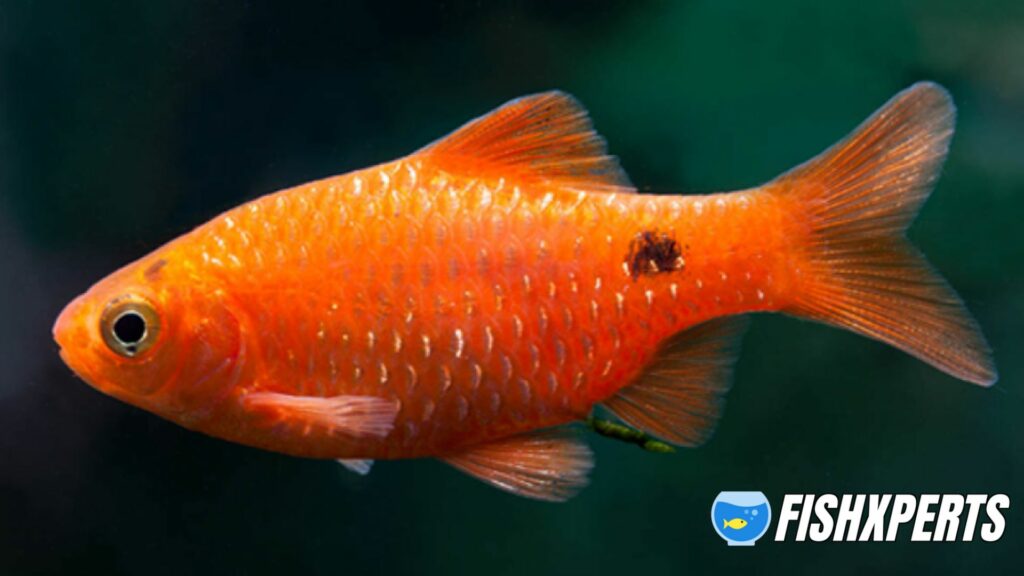
Rosy Barb: Interesting Facts & Stats
- Rosy Barb is a peaceful and hardy fish that is a great addition to any aquarium.
- Rosy Barb can grow to be about 6 inches long.
- Rosy Barb is a omnivore and will eat both plants and meat.
- Rosy Barb prefers to live in groups and should be kept in an aquarium with at least 5 other fish.
Common Possible Diseases
Like all fish, Rosy Barbs are susceptible to a variety of diseases. Some of the more common diseases include:
Aquarium Fish Disease: Aquarium fish are susceptible to a wide variety of diseases. Some of the more common diseases include:
Ichthyophthirius multifiliis, or “ich”, is a common parasitic disease that can affect Rosy Barbs. Ich is characterized by white spots on the fish’s body, fins, and gills. Ich can be fatal if left untreated.
Amyloodinium ocellatum, or “marine velvet”, is another parasitic disease that can affect Rosy Barbs. Marine velvet is characterized by a velvety, yellowish-brown growth on the fish’s body. Marine velvet can be fatal if left untreated.
Mycobacterium marinum is a bacterial disease that can affect Rosy Barbs. Mycobacterium marinum is characterized by red lesions on the fish’s body. Mycobacterium marinum can be fatal if left untreated.
Vibrio bacteria are a type of bacteria that can cause disease in fish. Vibrio bacteria are characterized by red lesions on the fish’s body. Vibrio bacteria can be fatal if left untreated.
Rosy Barb Tank Mates
As an aquarium fish, the Rosy Barb is a peaceful community fish that does well with other similar sized fish. They are not known to be fin nippers, and get along well with most fish.
Some good tank mates for Rosy Barb include:
- Danio
- Tetra
- Guppy
- Platy
When choosing tank mates for your Rosy Barb, it is important to consider the size of the fish and the temperament. Rosy Barbs are relatively peaceful fish, so it is best to choose fish that are of a similar size and temperament.
Breeding & Mating
Rosy barbs are easy to breed and make great parents. They are livebearers, meaning they give birth to live young. The female will carry the fry (baby fish) in her body until they are ready to be born.
To breed rosy barbs, you will need a group of at least six fish. It is best to have two males for every female. The males will chase the females around and the females will drop their eggs. The eggs will sink to the bottom of the tank and the males will fertilize them.
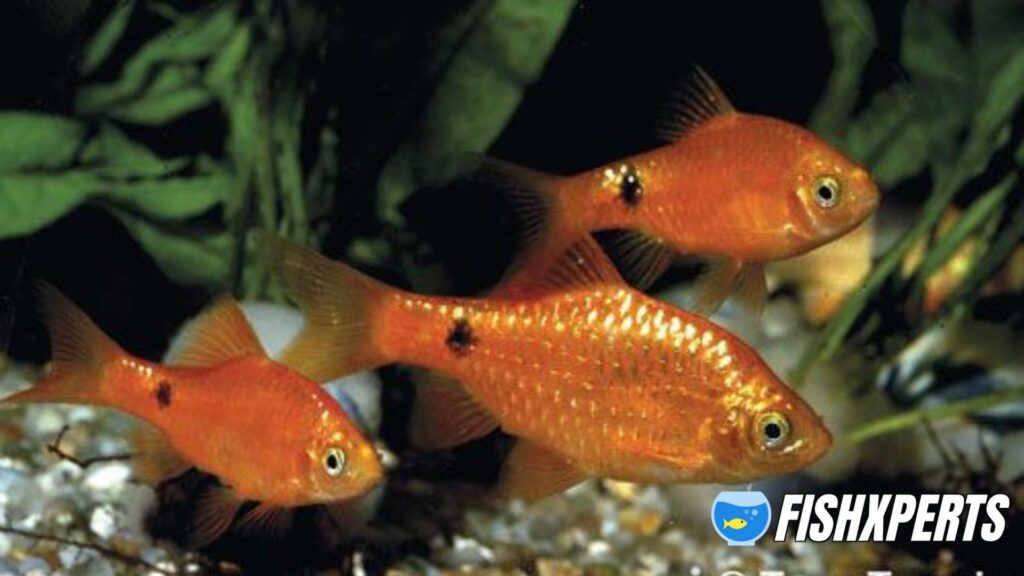
The female will then carry the eggs in her body for about three weeks. During this time, you will see her belly getting bigger as the fry develop. After three weeks, the female will give birth to 10-20 live fry.
The fry are very small and need to be fed baby brine shrimp or other tiny foods. They will grow quickly and be ready to breed in about six months.
FAQ
Can Rosy Barbs Live in A Pond?
If you’re looking to add a splash of color to your aquarium, the Rosy Barb is a perfect choice. These hardy fish are relatively easy to care for, and they make a beautiful addition to any freshwater setup.
Here are a few tips to help you successfully care for your Rosy Barb:
1. Provide plenty of hiding places. Rosy Barbs are relatively peaceful fish, but they can be a little shy. Be sure to include plenty of plants and other hiding places in your aquarium to help your fish feel comfortable.
2. Keep them in a group. Rosy Barbs are social creatures and do best when kept in a group. A group of 6 or more fish is ideal.
3. Feed them a varied diet. Rosy Barbs are omnivorous, so they will appreciate a varied diet. Include both plant and animal matter in their diet, such as live plants, algae, small insects, and frozen or freeze-dried foods.
4. Keep the water quality high. Rosy Barbs are sensitive to water quality, so be sure to perform regular water changes and monitor the water parameters closely.
With proper care, your Rosy Barbs will thrive and bring beauty and enjoyment to your aquarium for years to come.
How Much a Rosy Barb Fish Cost?
At the time of this writing, a Rosy Barb fish cost between $3.50 and $5.00. However, prices are subject to change and may be higher or lower depending on the time of year and availability.
Can rosy barbs kept alone?
Yes, rosy barbs can be kept alone, but they may become aggressive if not kept with other similar-sized fish. Rosy barbs are best kept in groups of 5 or more fish.
How Often Should You Feed Rosy Barbs?
The general rule of thumb is to feed your rosy barbs 2-3 times per week. However, this can vary depending on the specific needs of your fish.
For example, if you have a pregnant female rosy barb, you will need to feed her more often than a male rosy barb. It is always best to consult with a fishkeeping expert or your local fish store to determine the best feeding schedule for your fish.
How often should I feed rosy barbs?
Rosy barbs are a type of freshwater fish that are native to South Asia. They are a hardy fish that can live in a wide range of water conditions.
Rosy barbs are a peaceful fish that do well in community tanks. They are omnivorous and will eat a wide variety of food.
Rosy barbs should be fed once or twice a day. They should be given a small amount of food that they can consume in 2-3 minutes. Overfeeding can lead to water quality issues and health problems for the fish.
How long can Rosy barbs go without food?
Rosy barbs are able to go without food for quite some time, though it is not recommended to do so for extended periods of time.
They can typically go a week or two without food without any problems. However, if they are not fed regularly, they may start to lose weight and their health can eventually decline.
Final Thoughts
If you’re looking for a low-maintenance fish that can thrive in a wide range of water conditions, the Rosy Barb is a great choice. These hardy fish are relatively easy to care for, and they make a beautiful addition to any aquarium.
When it comes to filtration, the Rosy Barb is not particularly fussy. A good quality canister or hang-on-back filter will provide them with the clean water they need to stay healthy and happy. Just be sure to keep an eye on your water quality and perform regular water changes to keep things in tip-top shape.
So, if you’re thinking about adding a Rosy Barb to your aquarium, go for it! These beautiful fish are sure to bring you hours of enjoyment.
Topics Covered

